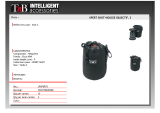
6 Meter Settings Using the Web Server ................................ 77
6.1. General Screen .................................................................................... 77
6.2. Trigg ers Screen .................................................................................... 83
6.3. Metering Screen.................................................................................. 88
6.4. Comms Screen: ................................................................................... 95
6.5. Users Screens ....................................................................................104
6.6. I/O Screen ..........................................................................................107
6.7. Diagnostics Screen.............................................................................110
7 Firmware Upgrade ................................................................119
7.1. Locating & Upgrading System Firmware on the Web .....................119
8 Troubleshooting & Maintenance ........................................ 121
8.1. Level of Repair .................................................................................. 121
8.2. Warnings! ........................................................................................... 121
8.3. Maintenance and Care ..................................................................... 121
8.4. Calibration ......................................................................................... 121
8.5. Technical Assistance ........................................................................ 121
8.6. Return Procedure .............................................................................. 122
8.7. Resetting the Meter to Factory Defaults (Web Browser) ............... 122
8.8. Com Reset Switch ............................................................................ 123
8.9. Operating in Safe Mode ................................................................... 123
8.10. Troubleshooting Matrix ................................................................... 124
9 Glossary ............................................................................... 133
A MODBUS Communication (See IB150014EN) .................. 137
B Standard & Extended Modbus Register Maps
(See IB150014EN) .................................................................139
C SNMP Communication ....................................................... 141
C.1. SNMP in Power Xpert Meter ........................................................... 141
D Option Cards ....................................................................... 143
D.1. Power Xpert Meter Option Cards ................................................... 144
D.2. Optional I/O Card ............................................................................. 145
D.3. 1ms Time Stamping of Digital and Sub-Cycle Disturbance
Events ...................................................................................................... 146
D.4. NTP Time Server .............................................................................. 146
D.5. Satellite Time Reference (Cyber-Sciences STR-100) ...................... 147
D.6. Communications Expansion Card (PXMCE card) .......................... 148
D.7. Communication Ports (PXMCE card) .............................................. 149
E Standard Cards ................................................................... 151
E.1. Power Xpert Meter Cards .............................................................. 152
E.2. Communication Main (PXMCM) Card ............................................ 153
E.3. PXMCM Com 0 and Com 1 RS485 bias resistors
(Terminals CM3, CM5) ........................................................................... 154
E.4. 24V Source Outputs CM4 & CM6 ................................................. 156
E.5. Power Supply Card PXMPS-1 ......................................................... 157
E.6. Diagnostic DIP Switch Settings ...................................................... 158
Page iv IM02601004E www.eaton.com
Table of Contents





















